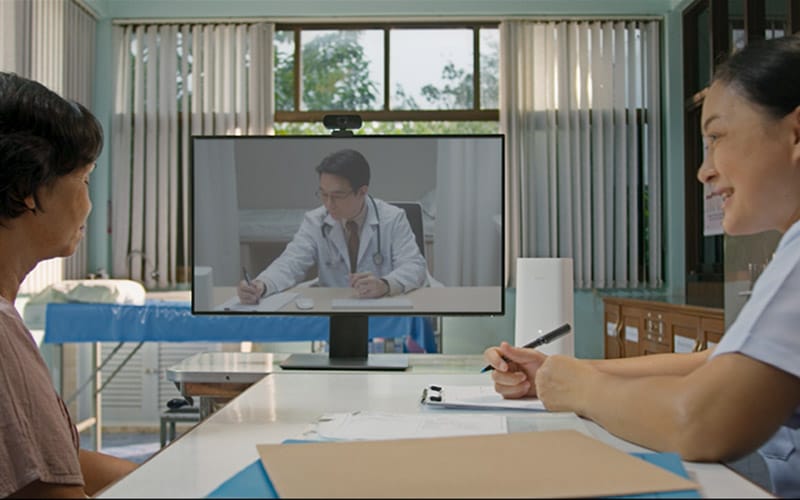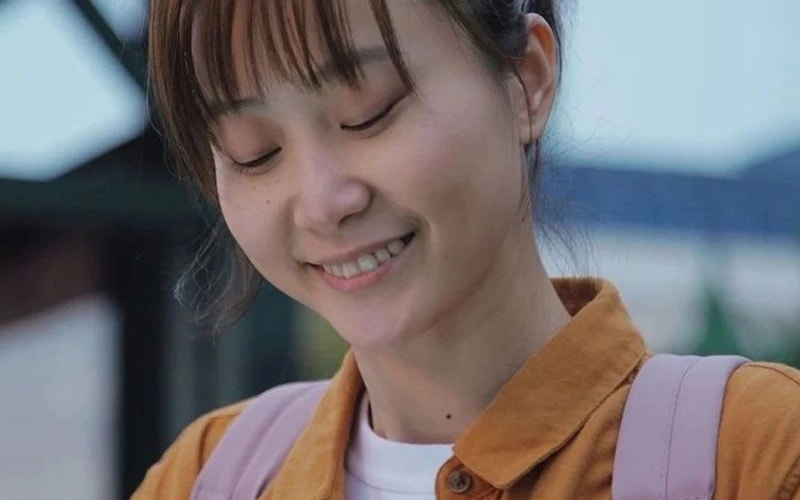More Than Meets the Eye
From one person to many, from limited movement to free running, from impossible to possible.
This is a story about a fully sight-impaired runner overcoming his limitations. But more than that, it is also a story about a group of sighted people helping those who cannot see run freely, and a story about how Huawei devices' accessibility features help visually-impaired people live life to the fullest.
When a fully vision-impaired person starts running, they are faced with many challenges and obstacles. They may be afraid of falling over or bumping into others, or tripping on small everyday items that most of us take for granted. They may also be unused to the forwards-leaning gait used when running and find it hard to get a bearing on their direction and the environment around them due to a lack of visual cues.
Participated in over 70 marathons, obtaining a best time of 3 hours and 14 minutes
However, being fully sight-impaired does not stop He Yajun from excelling as a runner.
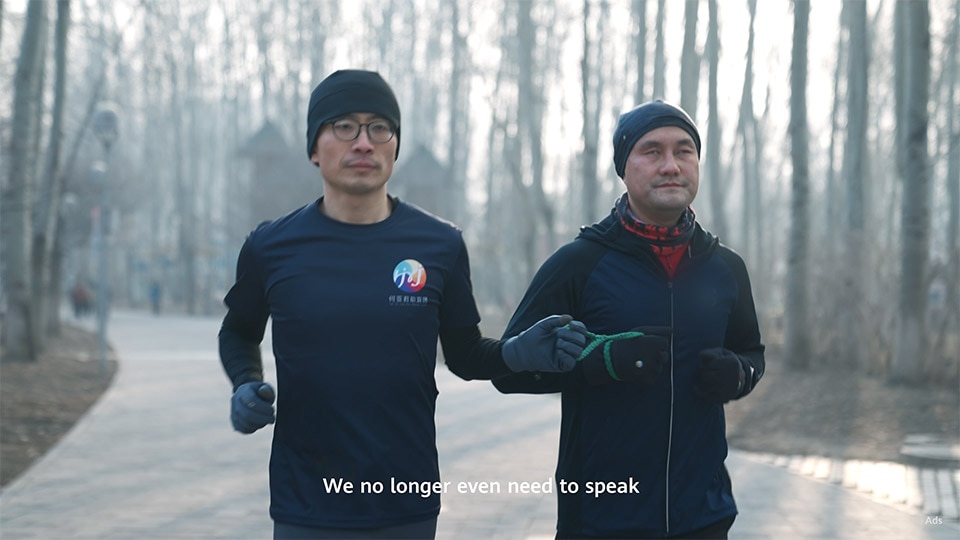
He Yajun, who is 43 years old, began running nine years ago with trepidation and uncertainty.
Knowing nothing about the environment, other runners on the road, and his own ability, He Yajun half walked and half ran his first seven kilometres as if he were stepping on eggshells.
However, following his difficult start, his running career immediately took off and he then tried running 10 km, 15 km, 20 km, and more. After a year of running, He Yajun lost over 20 kg in weight, and he no longer suffered from fatty liver or high cholesterol. After a decade on the road, he has now participated in over 70 full and half marathons, and achieved a best time of 3 hours and 14 minutes.
The first marathon He Yajun attended was the China Zheng-kai International Marathon 2015. "After running for 35 km, I was too exhausted, so I walked and ran the rest," he explained. "I told myself that, as long as I could finish the whole race, I was a winner, so I eventually made it." Having completed the marathon, he took over an hour to regain his composure and promised himself that he would never run again. However, his promise barely lasted even a week.
"I can't help running," He Yajun explained. He feels the energy of running with all his heart and soul. The sound of wind rushing past his ears and footsteps on asphalt symbolise freedom for him.
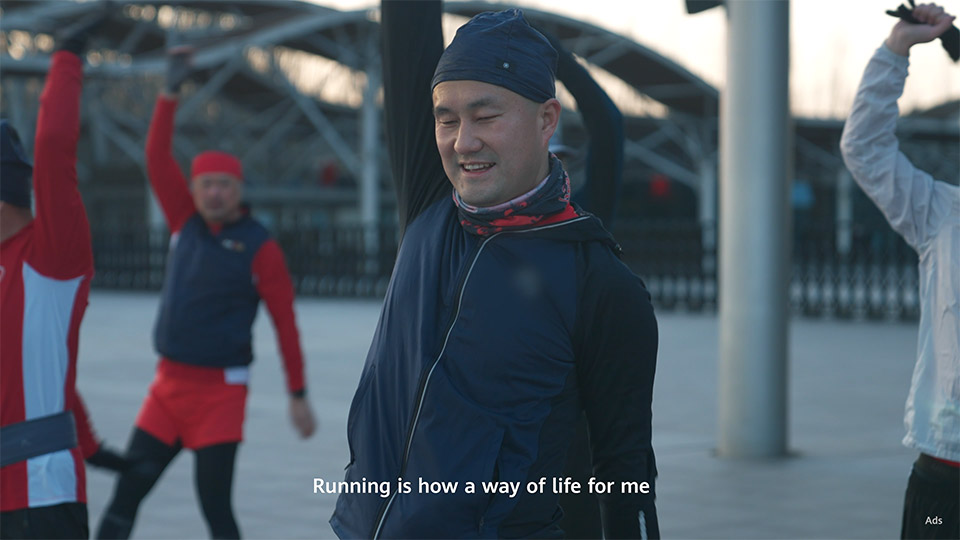
Back with the team
He Yajun set up the Vision-impaired Running Team in 2014, gathering volunteers from all walks of life to help other visually-impaired people enjoy the pleasure of running. To date, the team has organised more than 800 running activities and competitions for visually-impaired runners, with more than 50,000 visually-impaired individuals taking part in.
At the beginning of 2019, Li Ming joined the team after being introduced to it by a friend. As a newcomer to running at the time, Li Ming cherished the idea of helping others while also motivating himself to exercise. He believes that being a running companion for visually-challenged individuals represents a serious and professional responsibility that can bring great benefit to many. Each new volunteer must undergo a month of professional training, which includes running while blindfolded to mimic what visually-impaired people experience when running. No matter whether it's daily training or an actual running competition, a qualified running companion must stay focused, pay attention to their surroundings, and cue visually-impaired runners to even minor changes or obstacles that appear.
During a run, volunteer companions will use a rope and speech to notify visually-impaired runners of any obstacles or hazards that lie ahead, such as: "There is a speed bump X metres ahead so remember to raise your feet higher." They also need to pay attention to less noticeable objects on the road, including manhole covers, damaged road sections, pebbles, and branches. Experienced companions are even able to listen to a runner's breathing rate and pace to determine whether the runner is able to maintain the current speed and complete the planned training. Meanwhile, a Huawei watch broadcasts interval and heart rate reminders to facilitate training.
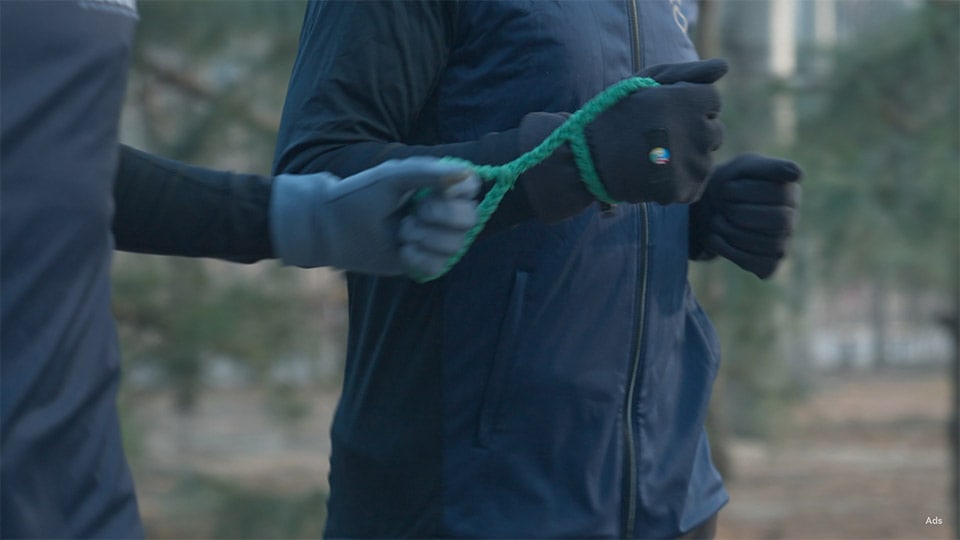
At the 2022 Beijing Marathon, He Yajun achieved his unprecedented 3 hours and 14 minutes record. He was elated by the result and felt immense pride in his team — all six of his running companions had been able to keep up.
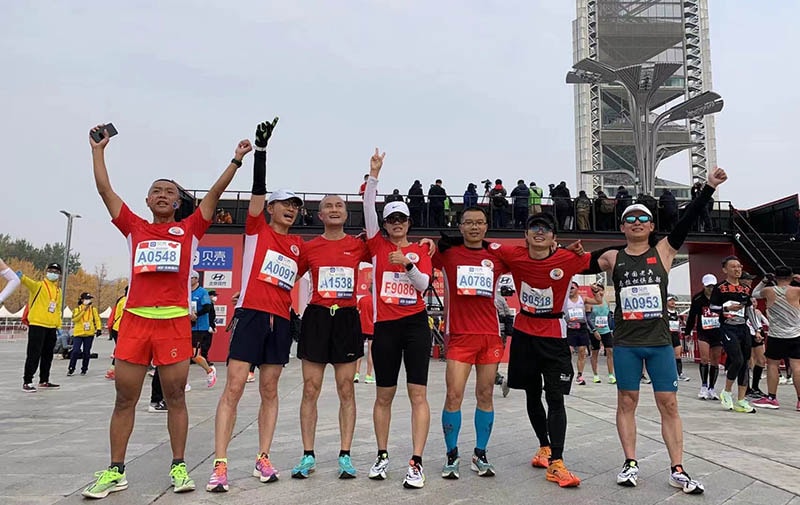
2022 Beijing Marathon – He Yajun and running companions
"There are only two kilometres left," exclaimed Li Ming. "We can make it!" Upon reaching the 40 km milestone, he suddenly wished that this marathon would never end, as he felt his heart swell with happiness because every member was working so hard. At that moment, Li Ming thought of all the years he had spent in the team helping others and felt a great sense of accomplishment. "As volunteers, we don't just help our visually-impaired friends. They also motivate us and make us better."
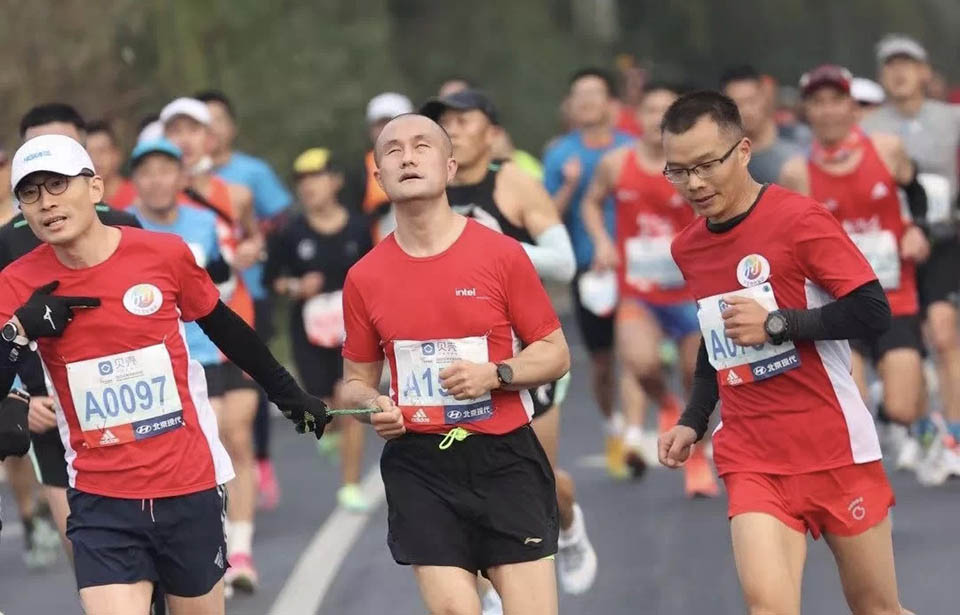
He Yajun and his running companions at the 2022 Beijing Marathon
Giving visibility to the visually-impaired
In He Yajun's therapeutic massage shop, a large framed collection of medals with different shapes and sizes hang from the walls. "Gold medal on a black surface. Text: Beijing Half Marathon." This is the voice he hears after enabling the image recognition feature on his Huawei phone and pointing the phone at one of his medals. He then introduces the story behind the medal to curious friends or guests.
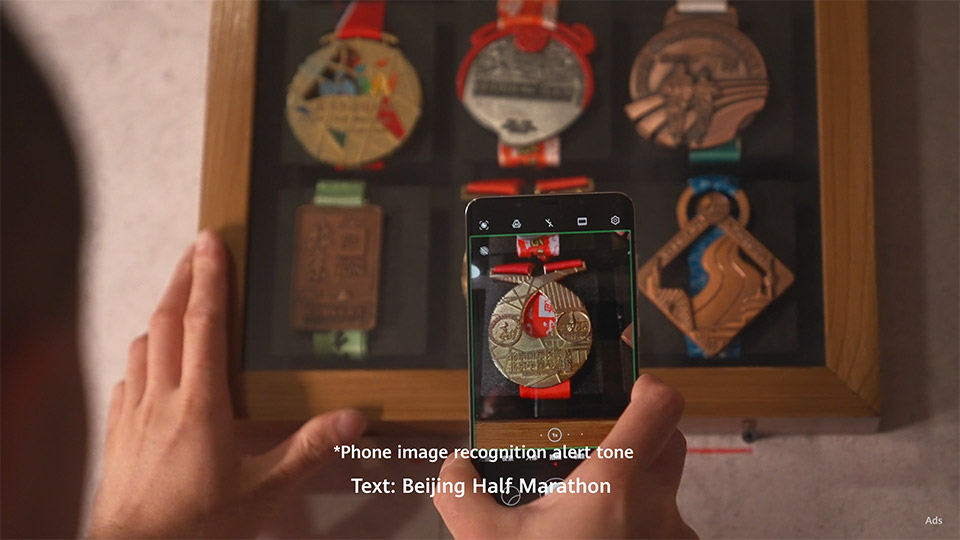
Huawei phone – Image recognition feature
Another of Huawei's accessibility features allows He Yajun to clearly hear messages sent by his running companions to his mobile phone: "Yajun, let's go for a run tomorrow morning at the usual time." Even emojis can be described using the voice broadcast feature. Similar to his companions when running, Huawei devices have become one of his indispensable life assistants. He operates the screens on his Huawei devices with great dexterity and obtains the necessary information through voice broadcast. He responds to his companions' running invitations enthusiastically through Celia Keyboard: "Sounds good! See you at 7!"
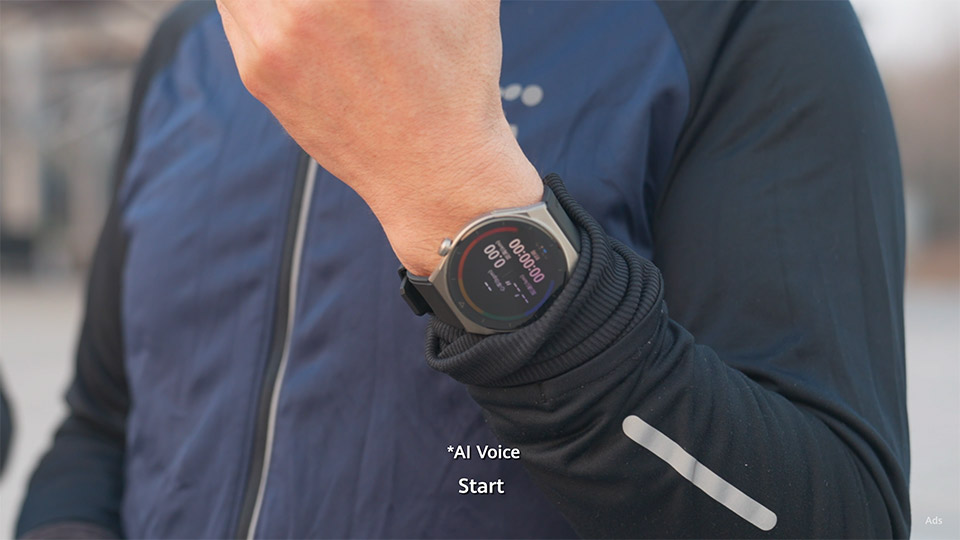
Before each run, He Yajun will say to his phone: "Celia, let's go on a run. Start!" His Huawei smart watch will then begin recording his running data, and broadcast interval and heart rate reminders during the run. When he issues a voice command, Celia, Huawei's smart mobile assistant, will intelligently determine and select an appropriate device to respond to and execute the command based on factors such as the user's location and the device type.
He Yajun initially chose a Huawei phone because of its renowned durability and performance. The phone's smooth system performance and excellent reception allow him to use it on his frequent hikes in the mountains, and the cold-resistant battery allows the phone to function perfectly even on cold winter morning runs at -10 °C. After using his phone for a while, he discovered that Huawei's photography assistance, image recognition, and other accessibility features were hugely useful in his everyday life.
Behind these features are the unremitting efforts and persistence of Huawei's engineering team, who carried out a series of in-depth research to better understand the demands of sight-impaired users. During their research, the team members closely shadowed visually-challenged individuals as they commuted, worked, ate, went to doctors' appointments, and performed other daily activities. This allowed Huawei engineers to obtain a detailed understanding of the needs and problems that visually-impaired individuals face, and record over 3000 experiences issues regarding 32 mobile phone functions, including calling, SMS messaging, and photography.
Take the photography assistance feature of the Huawei phone as an example. The phone broadcasts the position of a face in the viewfinder, such as "at the top of the screen", and it also notifies the user of the number of faces identified by the camera. To provide more information to visually-impaired users, the system automatically associates faces labelled in Gallery so that when taking a photo of the person, the phone automatically identifies the person and where they are located in the viewfinder.
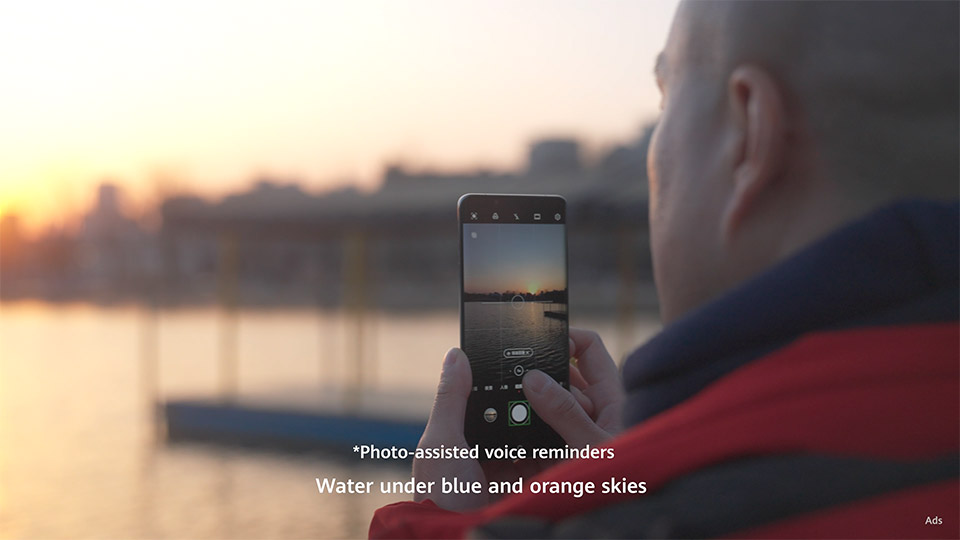
Recently, He Yajun took a beautiful sunset photo along the lake in Chaoyang Park using his phone. As soon as he tapped the shutter button, his phone broadcasted the voice message "water under blue and orange skies" to let him sense the image he had created. Springtime is here and peony flowers are blooming. He wishes to share the beautiful flowers with his friends so he takes out his Huawei phone, listens to the voice prompts to shoot stunning photos of the flowers, and posts them to his Moments or Channel, letting everyone experience his creation.

